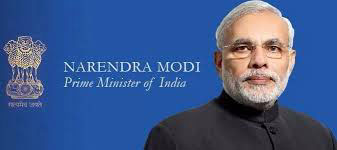India’s new Prime Minister, Narendra Modi, has been making the rounds on US talk shows, in addition to having dinner at the White House.
Since taking office in May, he’s promised a "saffron" revolution that brings solar lighting to all 400 million people that still live in the dark by 2019.
His predecessor missed the mark, but Modi, known as a "doer," is forging ahead on massive commitments to renewable energy.

He’s got plenty of experience because as Chief Minister of the Indian state Gujarat, he led the country on solar. At the time, Gujarat had 70% of India’s solar, with 900 megawatts installed in just two years. He formed the first government agency in Asia focused on climate change and wrote the book, Convenient Action: Gujarat’s Response to Challenges of Climate Change.
Already huge solar investments and the country’s first offshore wind farm have been announced, and tenders are out for 7 gigawatts (GW) of solar. The military is replacing diesel generators with 1 GW of solar and electrified fences that mark the border will also be solar-powered.
Piyush Goyal, India’s Energy Minister, expects $100 billion will be invested in renewable energy in the next five years, going far beyond the previous government’s target of 20 GW of solar by 2022. Adding 10 GW of solar and 6-8 GW of wind every year is completely conceivable, he says.
While there are no plans to move away from coal, Goyal has introduced incentives to close the oldest, least efficient plants, and doubled the tax on coal to provide financing for clean energy.
Both coal and renewables are needed to "to expand infrastructure, create jobs, improve the lives of people and get 24/7 power in every home," he told The Guardian. says. While coal is relatively easy to finance, solar still isn’t, and he has yet to see significant offers of help from advanced nations.
On the other hand, India doesn’t have the coal supply for a big expansion of power plants, notes Rajendra Pachauri, who heads India’s Energy and Resources Institute and chairs the Intergovernmental Panel on Climate Change (IPCC). Even today, many plants are stranded, he told The Guardian. And even India’s biggest coal company is installing solar to save on energy bills!
Solar
The previous administration installed just 1 GW of solar last year, bringing India’s total to 2.6 GW. Still, Modi’s new goal is to reach 15 GW by 2019.
4 GW of that will come from just one, enormous solar plant initiated by his predecessor – four times bigger than the 10 largest US plants combined. 100,000 solar pumps will provide water in off-grid agricultural areas, and canals covered with solar will bring electricity and protect water supplies from evaporation. Covering 10% of Gujarat’s canals would add another 2.2 GW of solar, helping to raise farmers’ income and increasing food security through longer growing seasons.
Lastly, Modi is instituting policies that incentivize domestic-made components and panels.
The long term plan is "Desert Power India – 2050," where 270 GW of solar and 29 GW of wind would be spread across about 10% of the country’s deserts. That would give renewable energy a 35% share and coal, 32%.
"The Modi factor is very real with solar. He recognises that not only is solar very clean, it is also very fast to build," Pashupathy Gopalan of SunEdison, told The Guardian. "The cost of solar versus coal – the critical immediate factor – is near a tipping point." Grid parity has already been achieved for commercial and industrial customers and is expected to reach the residential market between 2018-2020, according to Bloomberg New Energy Finance.
Wind
While Modi’s government is preparing a National Offshore Wind Energy Policy, they have already announced their first project – 100 megawatts off the coast of Gujarat. The government is subsidizing the wind farm and the transmission lines.
"Clearly with the new government in place, which is very pro-clean energy, the macro scenario is very, very strong," says Devansh Jain, President of Indian turbine-maker, Inox Wind. The company plans to go public.
Modi restored tax credits for wind farms is spending $8 billion to upgrade the grid.
Another $1 billion will be spent to build 100 "smart cities" across the country – satellite towns near large cities that have advanced management systems for energy, water, solid waste and transport. At International Financial Tech City, which is under construction, sensors and other cutting-edge technologies will monitor and manage everything from traffic to lighting and water use.
There’s even a $2 billion plan to restore 25 million acres of forest.
Read our article, News From India: First Net-Zero Energy Building, Renewables Volatile.
